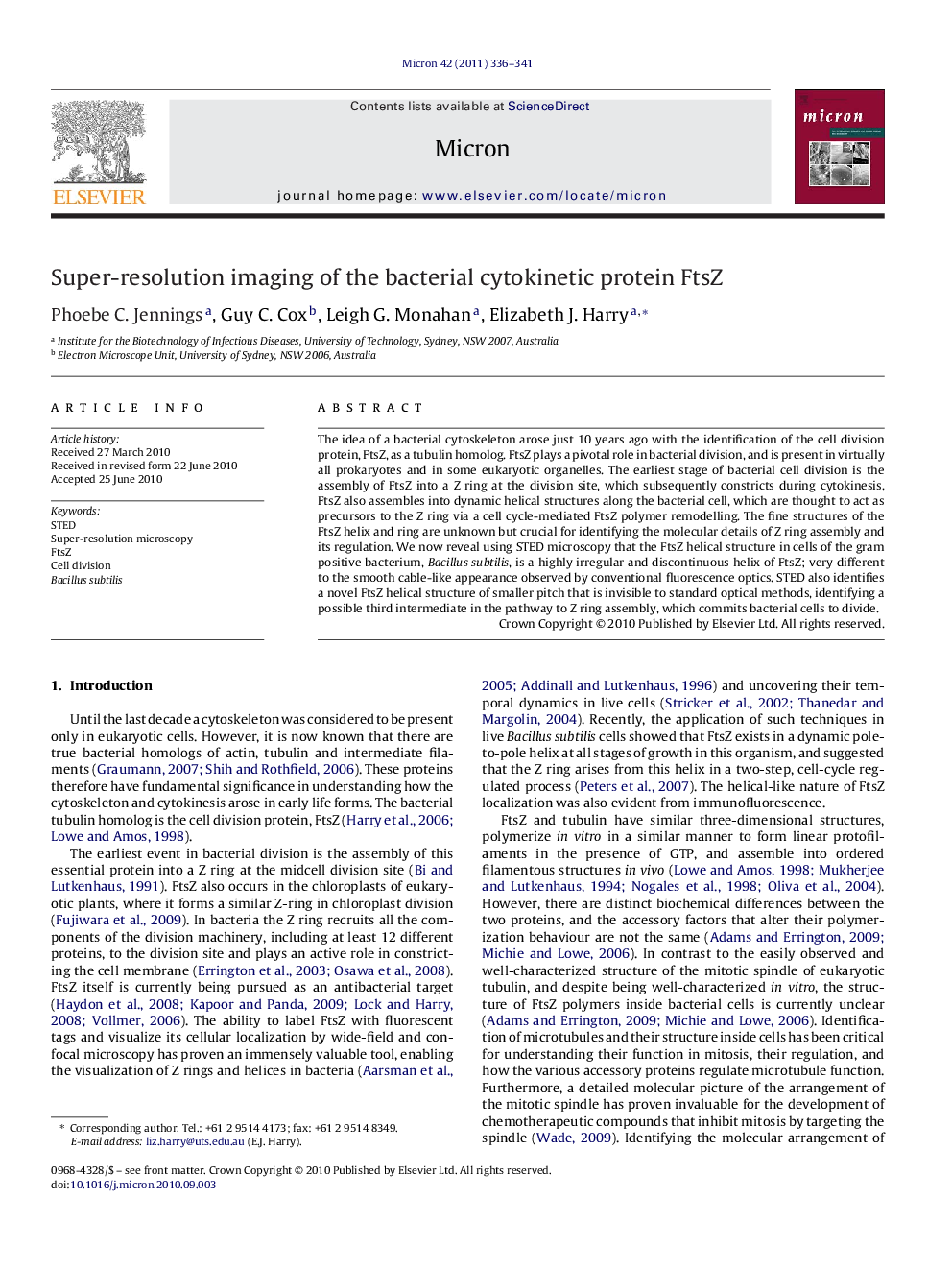| Article ID | Journal | Published Year | Pages | File Type |
|---|---|---|---|---|
| 1589521 | Micron | 2011 | 6 Pages |
The idea of a bacterial cytoskeleton arose just 10 years ago with the identification of the cell division protein, FtsZ, as a tubulin homolog. FtsZ plays a pivotal role in bacterial division, and is present in virtually all prokaryotes and in some eukaryotic organelles. The earliest stage of bacterial cell division is the assembly of FtsZ into a Z ring at the division site, which subsequently constricts during cytokinesis. FtsZ also assembles into dynamic helical structures along the bacterial cell, which are thought to act as precursors to the Z ring via a cell cycle-mediated FtsZ polymer remodelling. The fine structures of the FtsZ helix and ring are unknown but crucial for identifying the molecular details of Z ring assembly and its regulation. We now reveal using STED microscopy that the FtsZ helical structure in cells of the gram positive bacterium, Bacillus subtilis, is a highly irregular and discontinuous helix of FtsZ; very different to the smooth cable-like appearance observed by conventional fluorescence optics. STED also identifies a novel FtsZ helical structure of smaller pitch that is invisible to standard optical methods, identifying a possible third intermediate in the pathway to Z ring assembly, which commits bacterial cells to divide.
